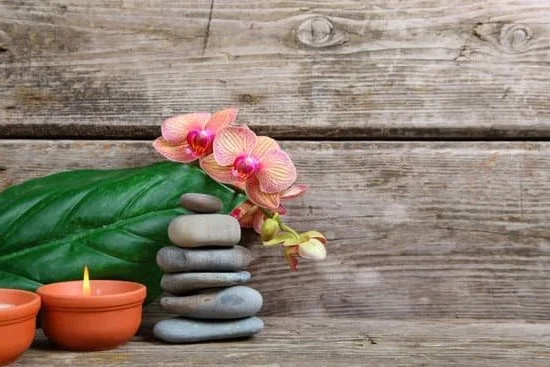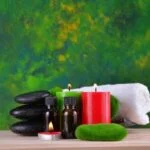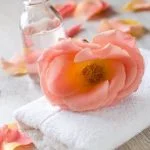Aromatherapy has gained popularity in recent years as a natural and holistic approach to health and well-being. It involves the use of essential oils derived from plants to promote physical, mental, and emotional balance. One of the key components of aromatherapy is the use of aromatherapy oils, which are concentrated extracts from various plants that carry unique therapeutic properties.
Using aromatherapy oils can offer a wide range of benefits for both the body and mind. These natural substances have been known to alleviate stress, improve sleep quality, boost mood, enhance focus and concentration, relieve pain and inflammation, support immune function, and even promote skin health. The power of aromatherapy lies in the ability of these oils to stimulate the limbic system in our brain, which is responsible for emotions, memories, and overall well-being.
If you’re interested in harnessing the potential benefits of aromatherapy oils but don’t know where to start when it comes to making them yourself, you’ve come to the right place. In this article, we will guide you through the process of creating your own aromatherapy oils at home.
From understanding the basics of essential oils to selecting the right carrier oil and exploring different blends for specific benefits, we will provide you with all the information you need to embark on your aromatic journey. So let’s dive in and learn how to make your very own customized aromatherapy oils.
Understanding the basics of aromatherapy oils
Aromatherapy oils are the foundation of any aromatherapy practice, as they contain the concentrated aromatic compounds that provide the therapeutic benefits. Understanding the basics of these oils is essential for anyone interested in making their own blends for personal use. There are a wide variety of essential oils commonly used in aromatherapy, and each has its own unique properties and potential benefits.
One of the most commonly used essential oils is lavender oil. Known for its calming and relaxing effects, lavender oil is often used to promote sleep and reduce anxiety. It can also help relieve headaches and soothe skin irritations. Another popular essential oil is peppermint oil, which has a refreshing and invigorating scent. Peppermint oil is known to aid digestion, relieve muscle tension, and improve focus and concentration.
Tea tree oil is another versatile essential oil with powerful antibacterial properties. It is often used to treat acne, fungal infections, and minor cuts or wounds. Eucalyptus oil is well-known for its decongestant properties, making it a popular choice during cold and flu season. It can help clear sinuses and improve respiratory function.
| Essential Oil | Properties |
|---|---|
| Lavender | Calming, relaxing, helps with sleep and anxiety |
| Peppermint | Refreshing, invigorating, aids digestion and improves focus |
| Tea Tree | Antibacterial, treats acne, fungal infections, and minor cuts/wounds |
| Eucalyptus | Decongestant, clears sinuses, improves respiratory function |
These are just a few examples of essential oils commonly used in aromatherapy, and there are many others available with their own unique properties. When choosing essential oils for your blends, it is important to consider the desired effect and any potential contraindications or allergies. It is also recommended to use high-quality, pure essential oils to ensure the best results.
Choosing the right carrier oil
Choosing the right carrier oil is a crucial step in making aromatherapy oils. Carrier oils are used to dilute essential oils, making them safe for topical application. They not only help to disperse the essential oils evenly but also provide additional benefits to the skin. Here are some factors to consider when selecting a carrier oil:
- Skin Compatibility: It is important to choose a carrier oil that is compatible with your skin type. Some carrier oils, like jojoba oil, closely mimic the natural oils produced by our skin, making them suitable for all skin types. For oily or acne-prone skin, lightweight and non-comedogenic oils like grapeseed oil or hazelnut oil may be better options.
- Absorption Rate: Different carrier oils have varying degrees of absorption into the skin. If you prefer a faster-absorbing oil that leaves little residue, options such as sweet almond oil or apricot kernel oil would be suitable. On the other hand, if you prefer an oil with a longer-lasting moisturizing effect, you might consider using avocado oil or coconut oil.
- Scent: Carrier oils have their own unique scents, although they are generally milder compared to essential oils. It’s important to choose a carrier oil with a scent that complements or does not overpower the aroma of your chosen essential oil blend.
- Shelf Life: Each carrier oil has its own shelf life before it goes rancid. Some carrier oils, such as fractionated coconut oil or grapeseed oil, have longer shelf lives and are less likely to spoil quickly compared to others like wheat germ oil or evening primrose oil. To extend the shelf life of your homemade aromatherapy oils, store them in dark glass bottles in a cool and dry place.
By considering these factors and doing some research on different carrier oils, you can select the best one for your specific needs and preferences. Experimenting with different carrier oils can be an exciting part of the aromatherapy oil-making process and ultimately enhance the overall experience and benefits of using aromatherapy oils.
Gathering the necessary supplies
Gathering the Tools
Before beginning the process of making aromatherapy oils, it is essential to gather all the necessary tools and equipment. Here is a comprehensive list of items you will need:
- Glass dropper bottles: These are used for storing and dispensing the finished aromatherapy oils. It is recommended to use dark-colored glass bottles, such as amber or cobalt blue, as they help protect the oils from light exposure.
- Measuring utensils: Accurate measurements are crucial when making aromatherapy oils. You will need measuring spoons and cups specifically designated for this purpose.
- Non-reactive mixing bowl: Choose a mixing bowl made of glass or stainless steel to avoid any reactions with the essential oils.
- Funnel: A funnel helps pour the prepared oil blends into the dropper bottles without any spillage or wastage.
- Labels: Properly labeling your homemade aromatherapy oils is important for easy identification and safety purposes. Use waterproof labels that won’t smudge or peel off over time.
Ingredients for Aromatherapy Oils
In addition to the necessary tools, you will also need various essential oils and carrier oils to create your aromatherapy blends. Here are some common ingredients used in homemade aromatherapy oils:
- Essential oils: These highly concentrated plant extracts provide specific fragrances and therapeutic properties in aromatherapy. Examples include lavender oil for relaxation, peppermint oil for invigoration, and tea tree oil for its antibacterial properties.
- Carrier oils: Carrier oils are used to dilute essential oils before use, ensuring safe application on the skin. Some commonly used carrier oils include sweet almond oil, coconut oil, jojoba oil, and grapeseed oil.
- Optional additives: Depending on your preferences and intended use of the aromatherapy oil blend, you may choose to add additional ingredients such as vitamin E oil (as a natural preservative), dried herbs or flowers for added visual appeal, or even small pieces of gemstones for energetic benefits.
Remember to always use high-quality, pure essential oils and carrier oils sourced from reputable suppliers. Using organic and unrefined options can further enhance the therapeutic qualities of your homemade aromatherapy oils.
Where to Find Supplies
Now that you have a comprehensive list of tools and ingredients needed for making aromatherapy oils, you may wonder where to find them. Many health food stores, specialty shops, and online retailers offer a wide range of essential oils, carrier oils, and other supplies required for aromatherapy. It is important to purchase from trusted sources that provide detailed information on the origin and quality of their products.
Additionally, consider exploring local farmers markets or herb festivals in your area, as they often have vendors selling high-quality essential oils and carrier oils. Connecting with knowledgeable sellers can also provide valuable insights into different aromatherapy blends and their specific properties.
By having all the necessary supplies ready before starting the process of making aromatherapy oils, you can ensure a smooth and enjoyable experience while creating your customized scents for relaxation, well-being, or any other desired effect.
Step-by-step guide
Making aromatherapy oils at home is a simple and rewarding process that allows you to create personalized blends tailored to your specific needs. Here is a step-by-step guide on how to make aromatherapy oils:
Step 1: Gather your ingredients
To make aromatherapy oils, you will need the following supplies:
- Essential oils of your choice.
- Carrier oil (such as almond, jojoba, or coconut oil).
- Glass bottles with tight-fitting lids.
- Measuring spoons and cups.
- Funnel for pouring oils into bottles.
Step 2: Choose your essential oil blend
Decide on the purpose of your aromatherapy oil blend. Are you looking for relaxation, stress relief, or improved focus? Different essential oils offer unique benefits. For relaxation, lavender and chamomile are popular options. If you want to relieve stress and anxiety, consider using bergamot or ylang-ylang. For enhancing focus and concentration, try rosemary or peppermint.
Step 3: Determine ratios and measurements
Using proper measurements is crucial when making aromatherapy oils to ensure both effectiveness and safety. A general guideline for dilution is to use a 2% essential oil concentration in a carrier oil base. This means using approximately 12 drops of essential oil per ounce (30 ml) of carrier oil.
Step 4: Mix the oils together
Using a clean glass bottle, add the desired amount of carrier oil using a funnel if necessary. Then add the essential oils drop by drop according to the recommended ratio. Securely fasten the lid on the bottle and gently shake it to mix the oils thoroughly.
Step 5: Let it rest
After blending the oils, it’s best to let them sit for at least 24 hours before using. This allows the oils to synergize and fully develop their aromatic properties.
Step 6: Label and store
Once your aromatherapy oil blend is ready, make sure to label the bottle with the ingredients used, the date it was made, and the specific purpose of the blend. Store the oils in a cool, dark place away from direct sunlight or heat to extend their shelf life.
By following these simple steps, you can create your own aromatic blends that promote relaxation, rejuvenation, and overall well-being. Experiment with different essential oil combinations to find what works best for you, and enjoy the benefits of homemade aromatherapy oils in your daily life.
Blending essential oils
When it comes to aromatherapy, blending essential oils is an integral part of the process. By combining different types of essential oils, you can create unique blends that offer specific therapeutic benefits. Whether you’re looking to relax after a long day, relieve stress and anxiety, or enhance your focus and concentration, there’s a blend of essential oils for you.
One popular blend for relaxation is lavender and chamomile. Lavender has long been used for its calming properties and can help promote sleep and reduce anxiety. Chamomile also has soothing effects on the mind and body, making it an ideal addition to a relaxation blend. To make this blend, simply mix equal parts of lavender and chamomile essential oils in a bottle and use it with a diffuser or dilute it with a carrier oil for topical application.
For those seeking stress relief, a combination of bergamot and ylang-ylang is often recommended. Bergamot has mood-lifting qualities and can help alleviate stress and tension. Ylang-ylang is known for its ability to relax the mind and body by reducing feelings of anxiety and promoting feelings of joy.
To create this blend, mix three parts bergamot essential oil with one part ylang-ylang essential oil in a bottle. Diffuse it in your space or add it to a carrier oil for massage.
Improving focus and concentration can be achieved through blends such as peppermint and rosemary. Peppermint has invigorating properties that can stimulate the mind and increase alertness. Rosemary is known to enhance cognitive function and improve memory retention. Combine equal parts of peppermint and rosemary essential oils in a bottle for your focus-enhancing blend. Use it in a diffuser while working or dilute with a carrier oil for topical use.
| Purpose | Recommended Essential Oil Blends |
|---|---|
| Relaxation | Lavender + Chamomile |
| Stress Relief | Bergamot + Ylang-Ylang |
| Improving Focus/Concentration | Peppermint + Rosemary |
Experimenting with different combinations of essential oils can help you find the perfect blend that suits your individual needs. Remember to always dilute essential oils properly and perform a patch test on a small area of skin before using them topically to avoid any potential sensitivities or allergies. Enjoy the therapeutic benefits of aromatherapy by creating personalized blends that promote relaxation, stress relief, or improved focus in your daily life.
Storing and preserving aromatherapy oils
Storing and preserving aromatherapy oils is essential to maintain their quality and effectiveness over time. When not properly stored, essential oils can deteriorate and lose their therapeutic properties. Here are some tips on how to store and extend the shelf life of homemade aromatherapy oils:
- Choose the right containers: It is crucial to use dark glass containers such as amber or cobalt blue bottles to store your aromatherapy oils. These types of containers help protect the oils from exposure to light, which can cause oxidation and degradation. Avoid using plastic or clear glass bottles as they do not provide adequate protection.
- Store in a cool, dark place: Essential oils are sensitive to heat and sunlight, so it is important to keep them away from direct sunlight and high temperatures. Store your aromatherapy oils in a cool, dark place like a cabinet or drawer away from windows or heating vents.
- Keep away from moisture: Moisture can lead to contamination and mold growth in your aromatherapy oils. Make sure the lids of the bottles are tightly closed after each use to prevent any moisture from entering the container. If you live in a humid climate, you can also consider adding silica gel packets to absorb any excess humidity.
- Label and date your oils: Properly label each bottle with the name of the essential oil blend or single oil used, as well as the date it was made. This will help you keep track of the freshness and potency of your aromatherapy oils over time.
- Use within recommended timelines: While essential oils generally have a long shelf life, it is recommended to use them within 1-2 years for optimal quality and potency. Some citrus-based essential oils have a shorter lifespan, so be sure to check individual recommendations for specific oils.
By following these storage tips, you can ensure that your homemade aromatherapy oils remain fresh and potent for an extended period of time, allowing you to enjoy the benefits of aromatherapy for longer. Remember to always conduct a patch test before using any essential oil on your skin and consult a certified aromatherapist or healthcare professional if you have any concerns or questions.
Safety precautions
When working with essential oils, it is important to prioritize safety and be aware of potential allergies and sensitivities that may arise. Essential oils are highly concentrated substances that can have powerful effects on the body, both positive and negative. Therefore, it is crucial to take certain precautions to ensure a safe and enjoyable aromatherapy experience.
Perform a patch test
Before using any essential oil on your skin or inhaling it, it is essential to perform a patch test. This involves applying a small amount of diluted essential oil to a small area of your skin, such as the inside of your wrist or elbow. Wait 24 hours to see if any irritation, redness, rash, or discomfort occurs. If you experience any adverse reactions, discontinue use immediately.
Dilute properly
Essential oils should never be applied directly onto the skin without dilution. Instead, they need to be mixed with a carrier oil before application. Carrier oils not only help dilute the essential oil but also assist in spreading it across the skin evenly. Some commonly used carrier oils include almond oil, coconut oil, jojoba oil, and grapeseed oil. It is recommended to follow appropriate dilution ratios specified for each specific essential oil.
Avoid exposing essential oils to sunlight
Many essential oils are photosensitive, which means they can react when exposed to sunlight or UV rays and cause skin discoloration or even burns. To avoid these reactions, it is advisable to avoid direct sunlight or tanning beds for at least 12-24 hours after applying photosensitive oils such as bergamot, lemon, grapefruit, orange, lime, etc.
Keep essential oils out of reach of children and pets
Essential oils should always be stored safely out of the reach of children and pets. While aromatherapy can provide numerous benefits, ingesting or applying large amounts of essential oils can be toxic. It is important to treat essential oils with the same caution as you would any other potentially harmful substance.
By following these safety precautions, you can enjoy the therapeutic benefits of aromatherapy oils while protecting yourself from any potential risks or adverse reactions. Always consult a qualified aromatherapist or do thorough research before using essential oils, especially if you have underlying health conditions or are pregnant. Safety should always be a top priority when incorporating essential oils into your wellness routine.
Creative uses for aromatherapy oils
Aromatherapy oils have a wide range of uses beyond simply diffusing them into the air. They can be incorporated into various aspects of daily life, allowing you to enjoy their therapeutic benefits in unique and creative ways.
One way to use homemade aromatherapy oils is by creating personalized scents. You can mix different essential oils to create your own unique fragrance blends. Experiment with different combinations and ratios until you find a scent that resonates with you. Once you’ve created your custom scent, you can apply it to your pulse points or add a few drops to an unscented lotion or carrier oil for a subtle, personal fragrance.
In addition to fragrance, aromatherapy oils can also be used in natural skincare products. The properties of essential oils make them excellent additions to homemade beauty recipes. For example, lavender oil is known for its soothing properties and can be added to facial toners or body creams for a calming effect on the skin. Tea tree oil has antibacterial properties and can be used in acne spot treatments or added to shampoo for a refreshing scalp treatment.
Another creative use for aromatherapy oils is in DIY cleaning products. Many essential oils, such as lemon or eucalyptus, have powerful antimicrobial properties that make them effective natural cleaners. You can add a few drops of your preferred essential oil to a homemade all-purpose cleaner or create your own room spray by combining essential oils with water in a spray bottle.
By incorporating homemade aromatherapy oils into various aspects of daily life, you can enhance your overall well-being while enjoying the pleasant scents and therapeutic benefits they provide. Whether it’s creating personalized scents, making natural skincare products, or using them in DIY cleaning solutions, there are endless opportunities to explore the creative uses of aromatherapy oils and customize their application according to your needs and preferences.
Conclusion
In conclusion, making aromatherapy oils at home can be a simple and rewarding process. By understanding the basics of aromatherapy oils and choosing the right carrier oil, you can create personalized blends that offer numerous health and wellness benefits.
To begin, gather all the necessary supplies listed in this article and follow the step-by-step guide provided to ensure accuracy and safety. It is important to remember to store your homemade aromatherapy oils properly in order to extend their shelf life and maintain their potency.
Furthermore, it is crucial to be aware of safety precautions when working with essential oils. Practice caution when using them for the first time, as some individuals may have allergies or sensitivities. By following these guidelines, you can enjoy the creative uses of aromatherapy oils in your daily life.
Regular use of aromatherapy oils has been shown to promote relaxation, relieve stress, improve focus, and provide a variety of other health benefits. Whether you choose to incorporate homemade blends into your skincare routine or create personalized scents for your home, there are endless possibilities for enjoying the benefits of aromatherapy. So why not take the next step and start making your own aromatherapy oils today? Your mind, body, and spirit will thank you for it.
Frequently Asked Questions
Can you make your own aromatherapy oils?
Yes, it is possible to make your own aromatherapy oils at home. This allows you to have control over the ingredients used and customize the oil blends according to your preferences. However, it is important to note that making essential oils from scratch requires a significant amount of knowledge and expertise in botanicals and chemistry.
It involves extracting the volatile essences from plants through various methods such as steam distillation or cold pressing. Additionally, understanding the safety guidelines, dilution ratios, and potential allergic reactions is crucial when creating homemade aromatherapy oils.
How do you make aromatherapy oil at home?
Making aromatherapy oil at home can be a rewarding and creative process. To start, you will need a carrier oil such as sweet almond, jojoba, or coconut oil as a base for diluting your essential oils. Choose high-quality essential oils that suit your desired scent and therapeutic properties.
Add a few drops of essential oil to the carrier oil and mix well. The number of drops depends on the strength of aroma you desire but generally ranges from 5-15 drops per ounce of carrier oil. Remember to perform a patch test before using the blend on larger areas of skin to ensure there are no adverse reactions.
How are aromatherapy oils made?
Aromatherapy oils are made through various extraction methods depending on the type of plant material being used. The most common methods include steam distillation, cold pressing, solvent extraction, and enfleurage. Steam distillation involves passing steam through the plant material to release its volatile compounds which then condense into liquid form known as essential oil. Cold pressing is commonly used for citrus fruits where their outer peel is mechanically pressed to extract fragrant oils rich in zestiness and brightness.
Solvent extraction uses solvents like hexane or alcohol to dissolve aromatic compounds directly from delicate flowers or plants unable to undergo steam distillation or cold pressing. Enfleurage is an older method that employs odorless fat (such as animal fats) to absorb fragrant molecules from flowers over a duration of time. The fat is then washed with alcohol to separate the essential oil, leaving behind a highly concentrated aromatic extract. Once extracted, the oils are carefully stored to preserve their therapeutic properties and fragrance.

Are you looking for a natural way to improve your health and wellbeing?
If so, aromatherapy may be the answer for you.





